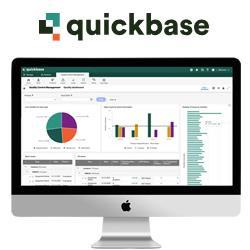The Interstate Renewable Energy Council releases its Solar Market Trends Report
PV capacity for installations doubled in 2011 compared to 2010
August 15, 2012. Latham, NY - Despite some high-profile negative news stories about solar in 2011, solar markets are booming in the United States, says Larry Sherwood, President of Sherwood Associates, and author of the 2012 Solar Market Trends Report from the Interstate Renewable Energy Council, Inc. Falling photovoltaic prices, strong consumer demand, and financial incentives from the federal government, states and utilities meant that twice as much photovoltaic solar was installed in 2011, as was installed in 2010.
This annual report compiles and analyzes public data on U.S. solar Solar Trends Report 2011 coverinstallations by technology, state and market sector for 2011. It covers solar technologies that produce electricity, including photovoltaics (PV) and concentrating solar power (CSP).
"More than 1.8 GWDC of photovoltaic installations were completed in 2011 at 64,000 sites," said Sherwood. "More utility-scale systems, and an increase in the average system size accounted for this dramatic growth."
By the end of 2011, there was twice as much PV capacity in larger utility and non-residential solar systems than there had been when the year began. Growth of the total installed capacity of utility and non-residential systems was dramatic, growing by 145% and 132% respectively, compared with 2010. State renewable portfolio requirements are an important reason for the large growth in the utility sector. In contrast, residential installations grew by 24% on a capacity basis, a much slower, while still healthy, rate.
"IREC's highly anticipated annual report points to continued growth in grid-connected PV, along with the continuation of the trend of higher growth rates for larger installations," says Jane Weissman, IREC's Executive Director.
Solar is continuing to be a more diversified resource in the U.S. While California remains the largest U.S. market, with about 29% of the U.S. capacity installed in 2011, the amount of PV capacity installed in Arizona, California, Hawaii, New Jersey, New Mexico and New York in 2011 was at least double the capacity installed in each state in 2010.
"In fact, California's number this year represents a significant drop in market share from the 68% recorded five years ago, in 2006," said Sherwood.
Many large solar projects began construction in 2011 in order to take advantage of the 1603 Treasury Grant Program. Most of these installations, both distributed and utility-sector projects, will be completed in 2012 through 2016.
"Since projects that begin construction in 2012 will no longer have the cash grant option," said Sherwood, "developers will need to find entities, such as banks and insurance companies, with tax bills large enough to take advantage of remaining tax credits."
This year, Sherwood included three 'Top 10' lists:
*The Annual Top 10 ranks states by the amount of grid-connected PV capacity installed in 2011;
*The Cumulative Top 10 ranks states by the cumulative amount of grid-connected PV capacity installed through 2011; and
*The Per Capita Top 10 ranks states by the amount of PV capacity per capita they had installed cumulatively through 2011.
Leading the pack for both installations in 2011 and cumulative installations are California, New Jersey, Arizona, Colorado, New Mexico and Pennsylvania. On a per capita basis, Hawaii and Nevada join these top-tier states.
Prices for PV installations fell in 2011, and all indicators point to a continued decline in 2012. Lower PV prices raise the potential for installations in states without state or local incentives. The number of states with strong solar markets is increasing, although Sherwood predicts installations in 2012 will continue to be concentrated in states with strong solar policies.
Over the near term, the prospect for growth in solar installations is bright. Early indicators point to continued market growth in 2012 due to the federal solar investment tax credit (ITC), state renewable portfolio standards, and completion of installations begun by the end of 2011 in order to participate in the 1603 Treasury Grant Program. Companies have announced plans for many large solar electric projects, including both PV and CSP projects. Some of these projects are under construction and will come on-line between 2012 and 2016.
"Reductions in PV module prices, continuation of the federal investment tax credit and strong state Renewable Portfolio Standards will help drive market growth," said Sherwood.
About the Interstate Renewable Energy Council, Inc. (IREC)
The Interstate Renewable Energy Council, Inc. (IREC) is a non-profit organization accelerating the use of renewable energy since 1982. IREC's programs and policies lead to easier, more affordable connection to the utility grid; fair credit for renewable energy produced; best practices for states, municipalities, utilities, and industry; and quality assessment for the growing clean energy workforce through the credentialing of trainers and training programs. www.irecusa.org.
Featured Product

